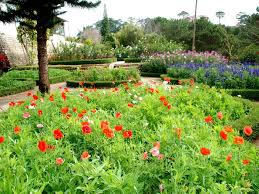The Connection Between Palace Design and Chinese Cultural Values

Palaces, especially those in ancient China, have long been symbols of royal power and prestige. They were not merely places where emperors resided but also the embodiment of a nation’s political, spiritual, and cultural values. The intricate design and layout of Chinese palaces reflect deep connections to the philosophies, traditions, and beliefs that have shaped Chinese culture over millennia. From their architectural features to their symbolic elements, these royal residences are a testament to the integration of cultural values within the physical space.
In this article, we will explore the significant relationship between palace design and the cultural values of China, examining how architectural elements, spatial organization, and symbolic decorations in imperial palaces reflect key aspects of Chinese philosophy, social hierarchy, and belief systems.
1. Confucianism and the Concept of Hierarchical Order
One of the most significant philosophical and cultural influences on Chinese palace design is Confucianism, a school of thought that emphasizes social harmony, respect for authority, and the importance of relationships. Confucian principles directly impacted the way palaces were structured, particularly in terms of hierarchy, order, and the relationship between ruler and subject.
1.1 Palaces as Symbols of Hierarchy
Confucianism stresses the importance of a well-organized society, where each individual knows their place within the larger social order. This principle is visually represented in the design of Chinese imperial palaces, where spatial organization often follows a strict hierarchy. The Forbidden City in Beijing, for instance, demonstrates this hierarchical design.
At the heart of the Forbidden City lies the Hall of Supreme Harmony, where the emperor would conduct important state affairs. This hall, as the largest and most important structure in the palace, symbolized the emperor’s supreme authority. It is surrounded by lesser halls and buildings, each serving a different function and symbolizing the lesser ranks of the imperial hierarchy. The positioning of buildings within the palace complex reflects the Confucian ideal of the emperor as the “Son of Heaven,” occupying the highest position in the cosmos.
1.2 The Importance of Ritual and Order
Confucian thought also emphasizes ritual as a means of maintaining social order. In this context, the design of palaces reflected the importance of ceremonies and rituals. The Imperial Ancestral Temple within the Forbidden City is a prime example. Here, emperors would perform ancestral rites to honor their predecessors and maintain a connection with the divine. The meticulous design of these spaces was intended to facilitate the smooth execution of rituals, which were crucial to maintaining the social and cosmic order that Confucianism advocated.
2. Taoism and the Integration of Nature in Palace Design
Taoism, another central philosophical and spiritual tradition in China, has had a profound influence on Chinese architecture. Taoism focuses on living in harmony with nature, balance, and the flow of energy (qi). This philosophy is reflected in the way palaces were designed to integrate with their natural surroundings, as well as the emphasis on creating peaceful, balanced environments.
2.1 Symmetry and the Flow of Energy
One of the most notable features of Chinese palace design influenced by Taoist principles is the emphasis on symmetry and balance. In the Forbidden City, the layout of buildings and gardens was carefully planned to align with natural forces and encourage the flow of qi. Buildings were strategically placed to avoid negative energy, and the palace complex was designed to be harmonious with the surrounding environment, ensuring that the emperor and his court could live in a space conducive to health, prosperity, and spiritual well-being.
The concept of feng shui, which is closely related to Taoism, also played a significant role in the design of imperial palaces. Feng shui, or the art of positioning objects and structures in a way that promotes harmony with natural forces, was often consulted during the construction of palaces. The Forbidden City, for example, was built to face south to harness the natural energy and ensure good fortune. The palace’s position and layout were meticulously planned to align with the principles of feng shui, enhancing the emperor’s rule and the prosperity of the nation.
2.2 Natural Elements in Palace Gardens
Taoism’s reverence for nature is also evident in the design of palace gardens. In many Chinese palaces, gardens were designed to reflect natural landscapes, with elements such as rocks, water, and plants arranged to evoke the beauty of nature in its most pristine form. The Summer Palace in Beijing, for example, is renowned for its beautiful landscape, including the serene Kunming Lake and the Longevity Hill. These natural elements, combined with man-made structures like bridges, pavilions, and corridors, create a harmonious environment where the emperor could retreat for rest and contemplation.
Taoist gardens in imperial palaces were designed to encourage spiritual reflection and a sense of tranquility. The beauty and order found in these gardens symbolized the emperor’s ability to maintain harmony with the natural world, a crucial quality for a ruler in Taoist philosophy.
3. Buddhism and the Spiritual Significance of Palace Spaces
Buddhism, which was introduced to China from India during the Han Dynasty, also left a significant imprint on Chinese palace design. The spiritual and aesthetic influences of Buddhism can be seen in the palace’s layout, the use of symbolism, and the decoration of the spaces.
3.1 Palaces as Spaces of Divine Authority
Buddhism’s emphasis on the cyclical nature of life, enlightenment, and the importance of ritual also had an impact on the design of imperial palaces. The emperor, viewed as the “Son of Heaven,” was seen as the earthly representative of divine authority, and his palace was meant to reflect this connection to the spiritual realm. Many palaces contained Buddhist temples and statues, symbolizing the emperor’s role in maintaining the moral and spiritual order of the world.
For example, the Jade Buddha Temple in Shanghai was built during the Qing Dynasty and reflects the influence of Buddhist architecture in its use of intricate carvings, statues of the Buddha, and ceremonial spaces designed for prayer and meditation. The presence of Buddhist elements in the palace reinforced the idea that the emperor was divinely chosen and responsible for the moral and spiritual well-being of the people.
3.2 Symbolism and Sacred Geometry
Buddhist principles of sacred geometry also found their way into palace design. The use of mandalas and symmetrical designs can be seen in the layout of the Forbidden City and other palaces. The central axis of the Forbidden City, which runs from the Meridian Gate through to the Hall of Supreme Harmony, can be seen as a symbolic path toward enlightenment, with the emperor’s throne representing the highest spiritual and political authority.
The inclusion of Buddhist elements in palace design also reflected the emperor’s role as a spiritual leader, responsible not only for governing the empire but also for guiding the nation toward spiritual and moral prosperity.
4. The Role of Color and Decoration in Chinese Palace Design
The colors and decorations used in Chinese palaces were also deeply rooted in cultural values and symbolism. In Chinese culture, color plays a significant role in representing different elements of the universe, with each color having its own symbolic meaning. These colors were carefully chosen and applied to palace structures to convey messages about power, authority, and the natural world.
4.1 Red and Yellow: Colors of Power
Red and yellow were the most prominent colors used in Chinese palaces, especially in the Forbidden City. Red, associated with good fortune, happiness, and prosperity, was used extensively in decorations, doors, and interior spaces. Yellow, considered the color of the emperor, symbolized imperial power and was reserved for the emperor’s buildings and clothing.
4.2 Symbolic Decorations
Chinese palaces were also adorned with symbolic decorations such as dragons, phoenixes, and lotus flowers. The dragon, in particular, was a symbol of imperial authority and power. The use of these symbols reinforced the emperor’s connection to the divine and his central role in Chinese culture.
The lotus flower, representing purity and spiritual enlightenment, was often depicted in the palace’s decoration, reflecting the cultural value placed on moral integrity and enlightenment.
5. Conclusion: Palaces as Cultural Mirrors
In conclusion, the design of Chinese palaces is a reflection of the nation’s deep cultural values, beliefs, and philosophical systems. Whether influenced by Confucianism, Taoism, or Buddhism, the architecture and spatial organization of palaces were meant to convey not only political power but also the spiritual and moral responsibilities of the emperor. These palaces were not merely places of residence; they were living symbols of the nation’s cultural identity and the emperor’s divine mandate to rule.
Through the centuries, Chinese palace design has remained a powerful expression of the cultural values that continue to define China’s history and identity. The connection between architecture and culture in these palaces serves as a testament to the enduring role of design in shaping the cultural and political landscape of China.

